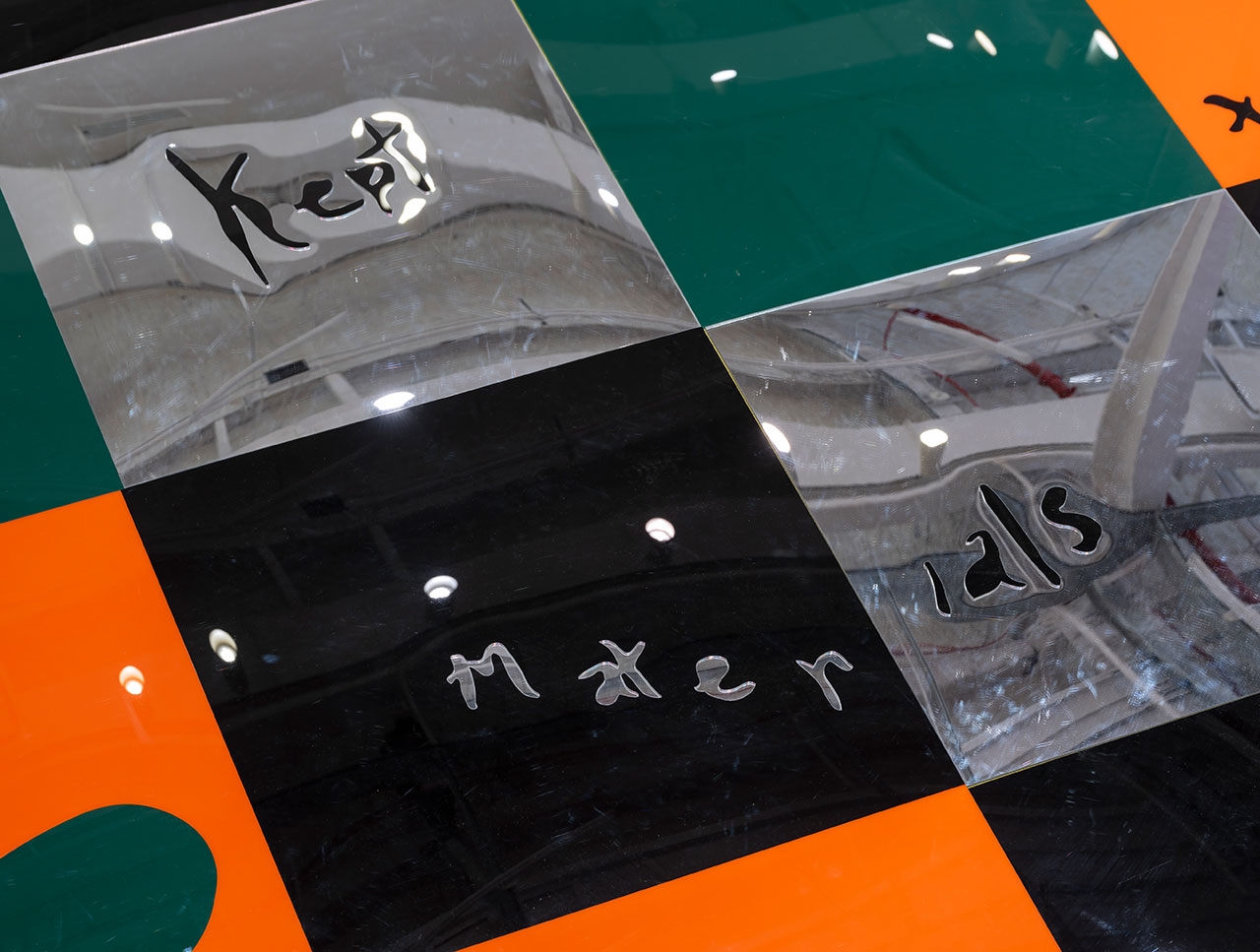Group exhibition B-side: (Broken) Memory and Remix draws upon and immortalizes methods crucial to the preservation of Black innovation and experience as told through Hip-Hop’s production techniques reimagined: sampling, splicing, and storytelling. Exemplary of these elements is Raque Ford’s checkered plexiglass dance floor on view at Brooklyn’s BRIC House through January 21st. Within the exhibit’s expansive, interactive framework – in some ways literally – lies the potential to fashion fresh futures from cultural artifacts with a poetic resonance sure to continue long after the show closes.
The physical 12-foot-by-12-foot dance floor surface is an amalgam of laser cut acrylic tiles in deep teal, black, tangerine, and metallic silver. The monotype prints relate materially and through content, often remixing elements from previous projects, featuring texts that are painted prior to lamination on yellow rubber atop an MDF platform. The narrative composition is intimate and derived from Ford’s own repository.
“I typically keep my writing in the notes app on my phone. It’s a mix of my personal musings and what I’ve overheard or read that I’m drawn to. I keep a diary of sorts for all this and when it’s time to make a work I reread through it and add and merge thoughts that I feel reflect where I am at the moment of creating the work,” Ford says. “This piece in particular is all found text. There’s a line from the Godard film Contempt, a quote from a TikTok about renovating an ugly fireplace, and lastly an excerpt from a New York Times article about Beverly Buchanan and her yellow VW Beetle.”
As with each iteration of her signature approach, technical challenges arise while bringing it to fruition. It’s paramount that the work be designed with modular components, and that the acrylic squares can be easily disassembled for collection after the exhibition with the intent of repurposing them during the next “remix” – an inherently sustainable art practice. In doing so, the dance floor components are more like ephemera, quite literally becoming a physical record by storing marks left behind from one show to celebrate that which is broken or scratched once recontextualized at the next.
Upon activation, the installation invites viewers to participate in community performance, connect with the physical space, and commune with one another. “Seeing when people chose to stand or sit to watch the performance and when people decided to relax and dance was exciting, and it helped me to think of what to change or add in the future.” The daughter of a late Hip-Hop producer and writer, Rober Ford, Raque contributes to her legacy in remixing personal elements with popular culture all embedded into the zeitgeist.
To find out more about B-side: (Broken) Memory and Remix visit BRICArtsMedia.org.


















